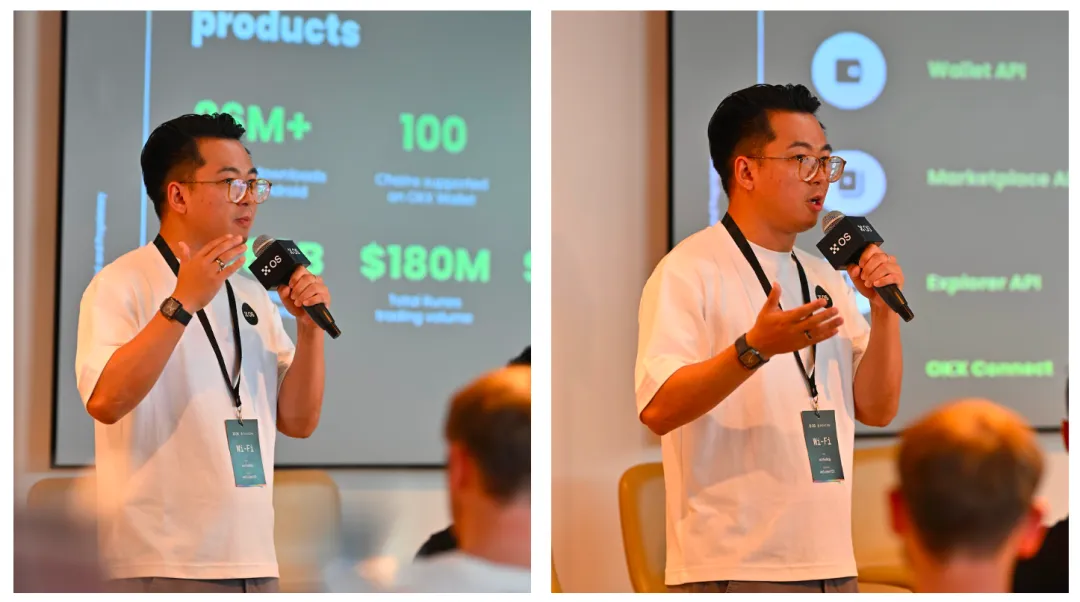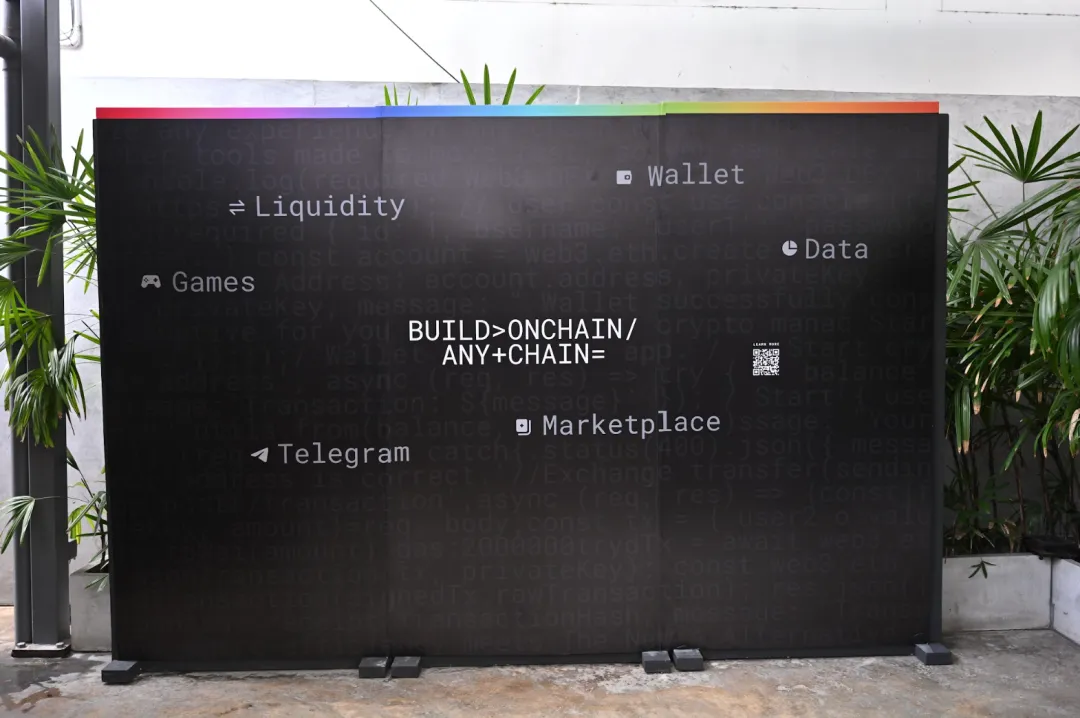- Topic
106k posts
65k posts
62k posts
57k posts
54k posts
47k posts
44k posts
44k posts
42k posts
- 10#NADA#
40k posts
- Pin
- 🔥 Join "Suggested Topics" Campaign & Win a share of $200 Weekly Rewards
👉 How to Join:
1.Visit Gate Post APP page
2.Click any top 3 "Suggested Topics"
3.Users who post quality content under "Suggested Topics" will be selected to win rewards.
Example:
Post content related to trading strategies, ma
- 🎉 Thanksgiving Special: Chat & Win Exclusive Gate.io Merch!
Thanksgiving Exclusive Merch Giveaway!Join the Gate.io Chat Community, chat actively in the community to win exclusive prizes, more futures vouchers, Thanksgiving Lucky Grand Prizes, and tons of red packets waiting for you to grab!
🎁Benef
- 🧧 Join Gate.io Chat Community to grab red packet airdrops everyday!
⏰ Click the red packet icon as soon as the countdown ends. First come, first served.
🔥 Remember to claim your lucky red packet & do not miss out!
Join Gate.io Chat Community:
👉🏻 Open #Gateio# App - Click "Moments" - Find "Chat"
- 📚 #Postopedia# Gate Post Postopedia 4️⃣ is coming!
Expose more Gate Post rules to help you master it!
🧐 What are Gate Post Ambassadors? What exclusive benefits are offered?
Become a ''Gate Post Ambassador'' and enhance your influence! 🚀
Sign up now to easily enjoy exclusive benefits! 🎁
Get invol
- 🔥 $100M in #USDE# Rewards Up for Grabs!
🎁 Hold #USDE# and Enjoy 34% APR, Settled Daily with No Staking Required!
💰 Exclusive Bonus for New Users: 100,000,000 #PEPE# !
👉 Join Now: https://www.gate.io/campaigns/100-m-usde
⏰ Event Duration: Nov 18, 00:00 - Nov 28, 00:00 (UTC)
Details: https://www.g
Devcon Review | Buidl with OS, a Talkshow for Web3 Developers
Can you build at the speed of__? On November 15, during the Devcon event, we opened the #Buidl with OS journey together at the Workshop in Bangkok with this question in mind.
In his opening speech, Chief Innovative Officer Jason delivered a keynote speech on the theme of "Build onchain, any chain", emphasizing the multi-chain features of the OS platform. Its ecosystem covers a wide range, providing support for over 100 different blockchain networks (including Ethereum, Bitcoin, Solana, etc.) for developers, helping them seize emerging opportunities and enter the market faster.
Regarding product details, Shen, the head of OS BD, introduced on site: Currently, OS provides 4 types of powerful APIs, including Marketplace, Explorer API, etc. Taking OKLink browser API as an example, Explorer and EaaS provide rich developer tools, on-chain data for 50+ mainstream blockchains (including EVM, UTXO chains, and Solana), and Token data for 200+ networks. Developers can access real-time on-chain data, aggregate statistical data, and seamless contract verification through browsers and other APIs. Easily integrate the EVM RPC module to achieve smooth migration and high compatibility.
And EaaS service can further help development teams fully unleash the potential of blockchain exploration. Whether it is a new L1 or an established chain, rollup or application chain, our zero-cost service can be tailored to your specific needs.
In the forum session, OKLink Product Director Simon initiated a discussion on the theme of 'What is the new gold mine of blockchain data' from the perspective of data infrastructure. Guests from Blocknative, Rootdata, Consensys SMG, Amberdata, and Blockaid shared their insights from theoretical and practical perspectives.
Q
Simon@OKLink: What is the most urgent problem or challenge in bringing Web2 users into Web3? Is it the security issues, trust issues, or the difficulty of finding 'gems' among numerous new projects? Or is it the technical complexity of existing tool experiences? How does blockchain data solve the above problems? What plans/projects are currently attempting to solve (or have already solved) these problems?
A
Raz@Blockaid: In my opinion, user experience and security are the primary issues that need to be followed. For example, can you make your grandmother immediately understand the product you are working on? So, you need to ensure that your users can fully understand what you are doing and what benefits it can bring to them. We can see that many projects and applications in the industry have already done a great job. If a Web2 user can fully understand the login interface when logging into a Web3 application without needing to spend a lot of additional time and if the prompts on your interface can make them believe and let go of their guard, then this sense of boundary will naturally disappear, and introducing Web2 users will no longer be a bottleneck that is difficult to overcome.
A
Matt@Blocknative**: **My answer may be different from everyone else's. I think users need a good reason to go on-chain. I want to ask each of you, do you remember the last time you solved your payment problem on your phone, and why did you do it? For me, two weeks ago, I came to Thailand for the first time and needed to use the transportation app Grab, so I downloaded it. And when I was in Chiang Mai, I couldn't use a credit card, so I downloaded another payment app. In such a scenario, there are very clear signals prompting me, hey, you really need cash. This is a very convincing scenario, in this situation, it is not surprising why users make explicit choices.
Do you still remember the scenario of logging on to the Internet for the first time, when there was only one Internet? But when you come to the on-chain world, you have multiple network options, and the complexity is obviously increased, such as user experience, fees, and latency, which are issues you need to consider. In my experience, the most convincing scenario is the Telegram bot. It is not free, but it is very convenient to use and very easy to set up. It only takes a few clicks to get the results, so users will be satisfied. So my point of view is that this kind of user experience, that is, we should do our best to eliminate the complexity and do useful things. Useful things may be entertaining, interesting, or practical, but they must be useful.
Q
Simon@OKLink**:**What are the challenges that institutions or enterprises intending to enter Web3 will face, and how can Block chain data help them accelerate the adoption of Web3 technology? Examples are welcome.
A
Hunter@Rootdata: I would like to take my project Rootdata as an example, which may be different from other guests. We focus on the off-chain data Web3 asset data platform, which has become a necessary data platform for millions of Web3 users for investment decisions, and is also committed to becoming a productivity-level tool for Web3 enthusiasts and investors. By presenting more detailed data, including entity Address, financing rounds, etc., we help project parties and senior professionals make better decisions. The rapid changes in the industry drive us to continue moving forward by using data means.
Q
Simon@OKLink**:** Change seems to be the norm in Web3, with new chains emerging every week. For Web3 builders, it's challenging to iterate the right use cases while dealing with evolving chain infrastructure (currently seems to be multi-chain coexistence). What innovative data tools can separate infrastructure from user experience and enable Web3 builders to quickly test ideas and incubate the next killer application?
A
Tongtong@Amberdata: I have been working with data for 7 years and have gone through several cycles. For a long time, it seemed that people were not following the data itself. But now, it's different. In several events I attended, I was excited to see participants discussing which data metrics they follow and having these data 'enthusiasts' and 'magicians' share their insights in the community. This reflects that each of us is trying to understand and connect the data. Therefore, the data tools represented by APIs available in the market can solve developers' problems. With powerful APIs, acquiring data is no longer a challenge, and it can be processed in an aggregated manner in a one-stop solution.
A
Max@Consensys SMG: In the process of building a new chain, we may face the challenge that as the integration increases, the value of the chain itself gradually decreases, which can easily lead to the loss of developers in the ecosystem, and the maintenance cost remains high. Developers naturally need a series of toolkits, so from my perspective, there should be sufficient efficient and easy-to-use toolkits on-chain to facilitate developers' quick start and convenient integration, so as to maintain the competitive advantage of the new chain in the long run.
At the same time, we had discussions with many developers on-site about data productivity tools. Among them, Master Cui, a leading figure in the developer community and a special researcher at the Science and Technology Innovation Institute, shared his experience from the perspective of a senior developer and technical instructor: "The on-chain data and analysis platform can help developers build smart. On the one hand, it can take on part of the backend work, and the data it provides saves the cost of developing a backend to obtain data. Another possibility is that the on-chain data platform itself can be repackaged into a new application. For example, I can apply the results of ready-made data to other applications I develop."
In addition, he stated that communication and efficiency in the development process are very important. Mature on-chain tools can greatly save the development team the time of searching for corresponding Open Source code, and can also do a good job in statistics and collection. Therefore, developers should fully utilize all available API and data tools, and use AI and other means to continuously optimize development collaboration, improve efficiency, and maintain innovation and competitiveness in the Web3 field.
When talking about the challenges encountered in the development process, developer Panda (@CodeMorePanda) said, "Because the entire public chain ecosystem is very diverse now, and there are also heterogeneous situations. For example, the ecosystems of Solana and EVM are completely different. If we try to connect them one by one, it will waste a lot of time. At this time, we can actually choose some data aggregation APIs, such as the OKLink API we are using, which can greatly reduce our development time, focus more on our own time, and save energy to unleash creativity."👉
Build Onchain, Any Chain. We had a great afternoon with developers in a relaxed workshop, where we spoke freely and shared ideas. The footsteps of on-chain ecosystem construction have never stopped. As data tools become increasingly sophisticated and AI becomes more intelligent, more creativity and inspiration will continue to emerge. This will drive Web3 to bring more unexpected excitement in a smarter and more agile manner.